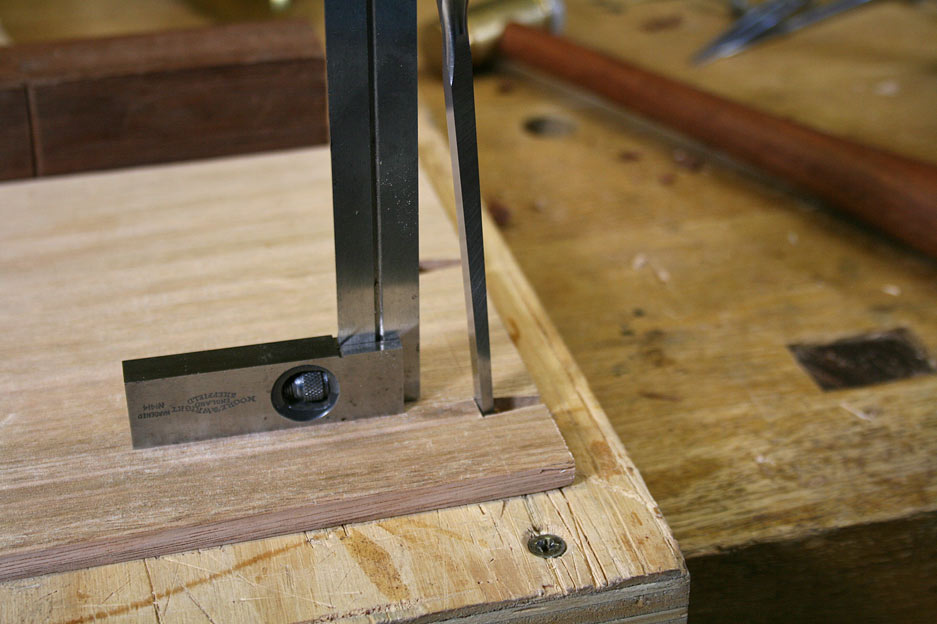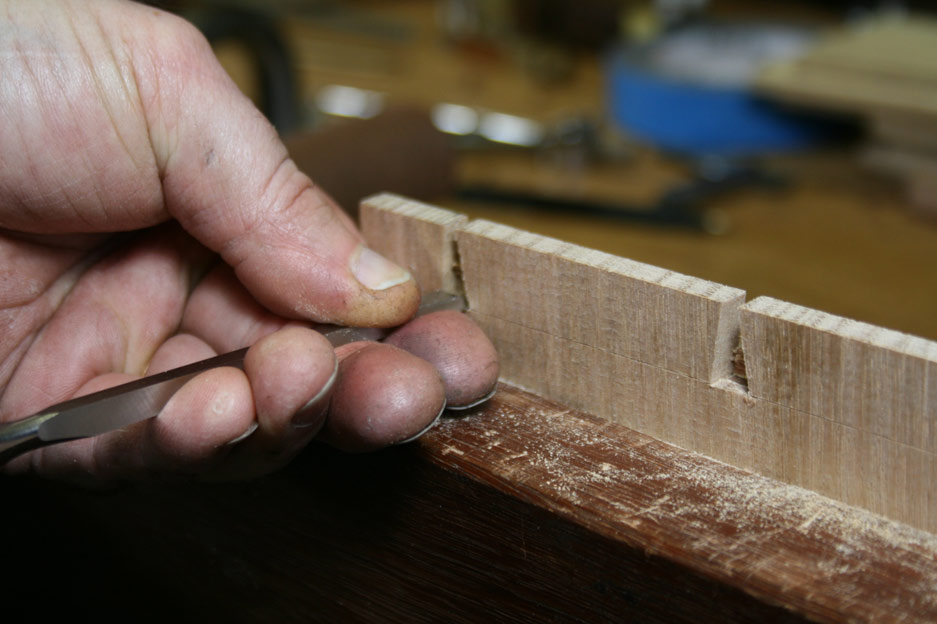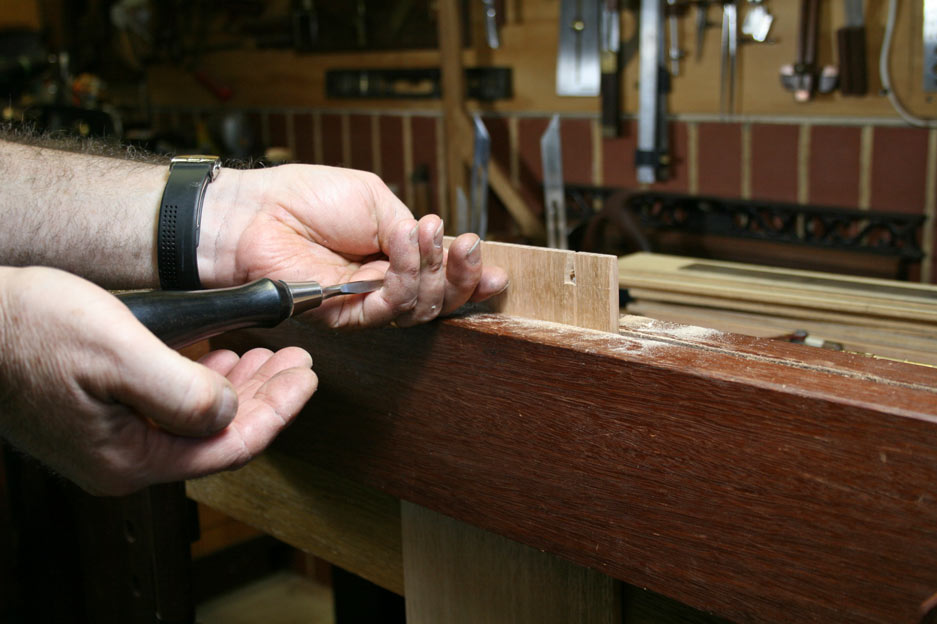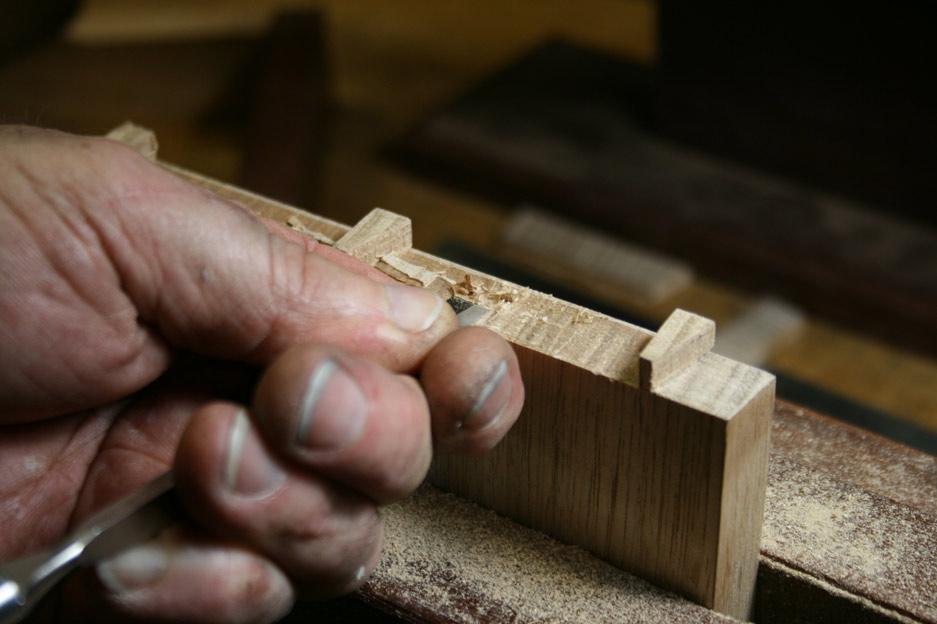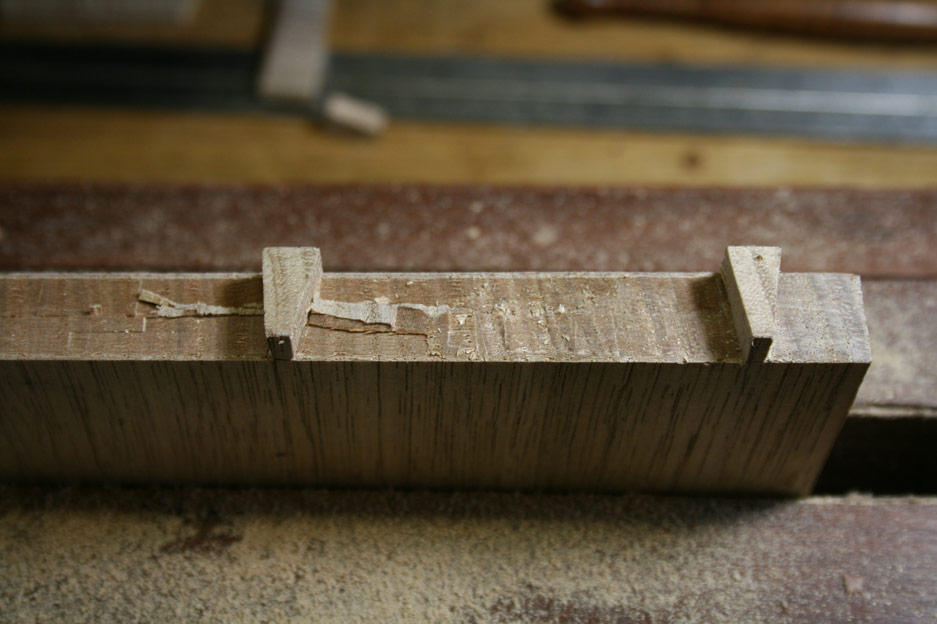I wrote a little bit about this technique in a recent-ish article in Quercus magazine. Tenting involves chiseling a "tent" . It looks like this ^ Used especially in dovetailing. This is an exert from an article on my website on through dovetails ...
Each chisel cut is at a slight angle (chisel from the non-show side first) ..
The reason for angling the chisel slightly away from the board (opposite of undercutting) is to avoid damaging the show baseline due to striking through.
The result is a slight triangle at the middle of the board. This is pared away …
Use your fingers as a depth stop to prevent paring deeper than the triangle of waste.
I prefer to tap the rear of the handle with the heel of my hand, as opposed to pushing the chisel, as this affords greater control of the cut. It is too easy to over-push the chisel (and damage the show side).
I prefer a narrow chisel (typically ¼”) to remove the waste. A slight undercut at this point is fine – this section of the joint is not structural, that is, it does not hold glue well (as it is end grain to end grain).
An alternative to paring straight is to use a slightly wider chisel and slice in a semi-circular manner.
Tenting is also used at the ends of the board, with the half-pins. Here you "tent" the sides of the waste, angling to the middle of the half-pin. Then you finish with clearing the centre.
Regards from Perth
Derek



